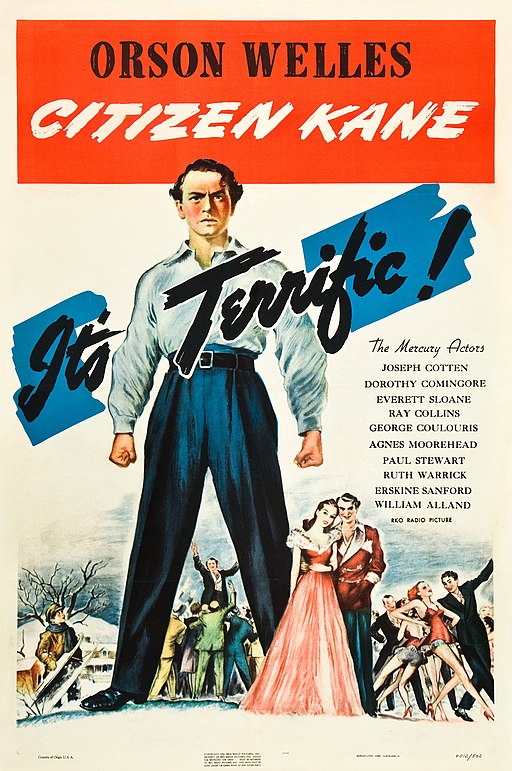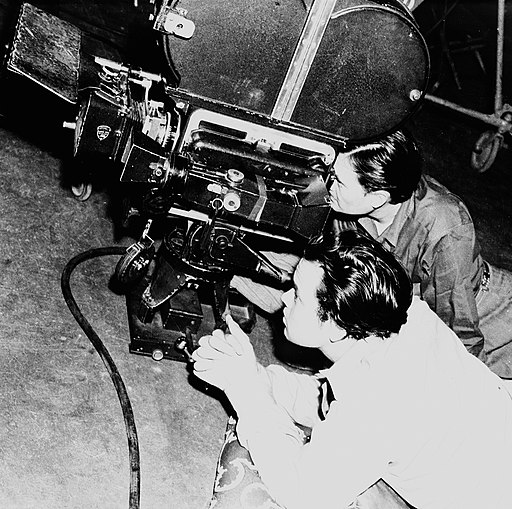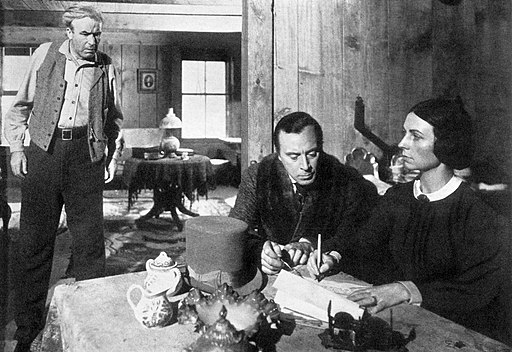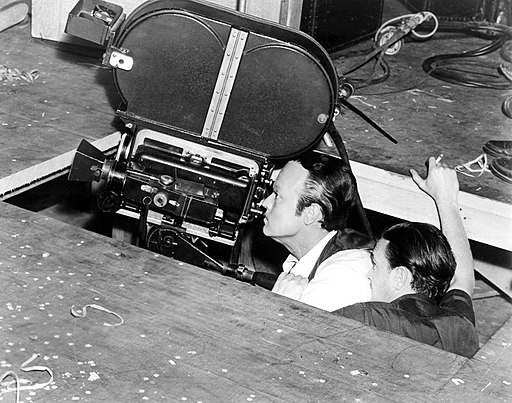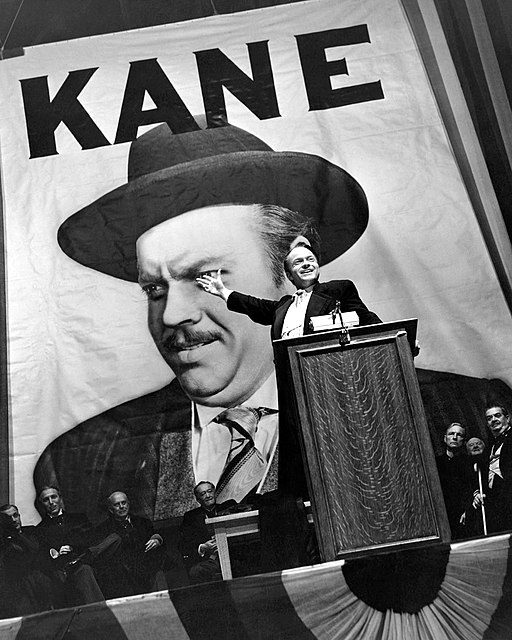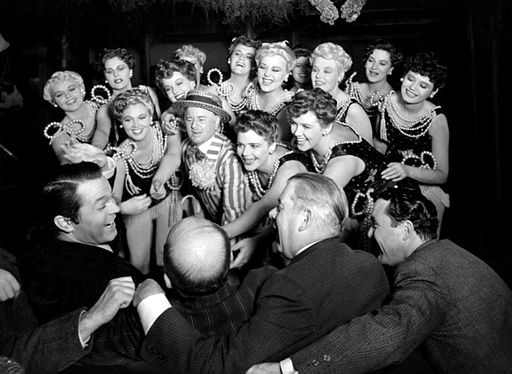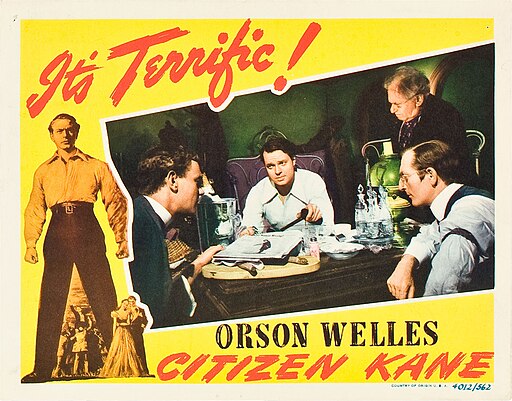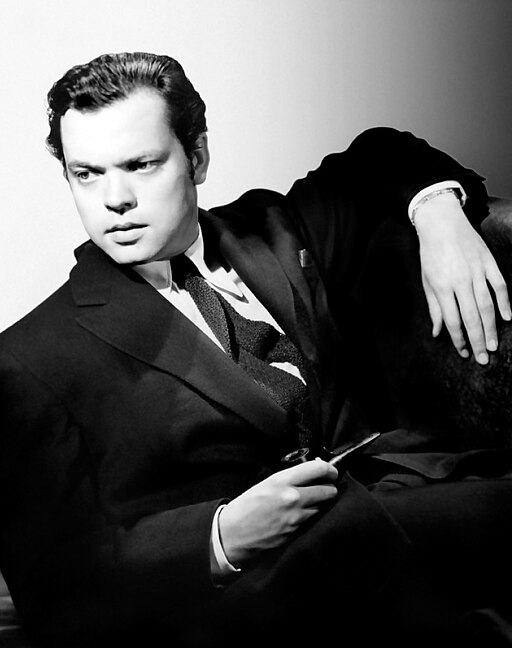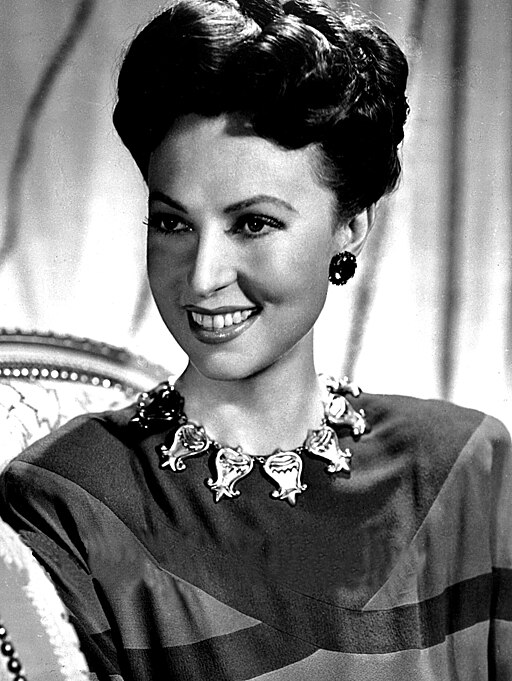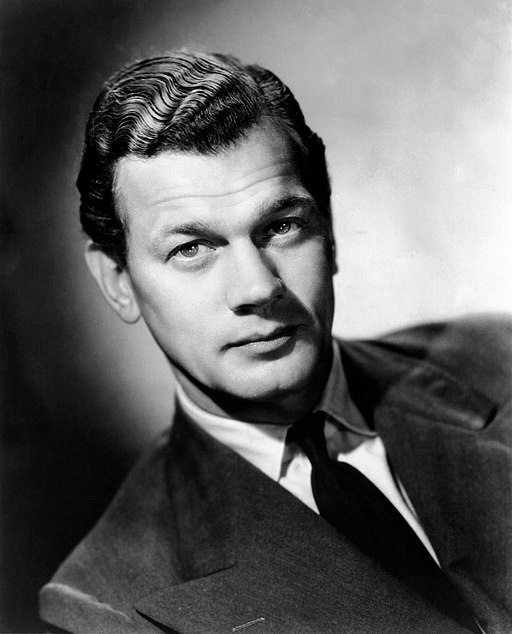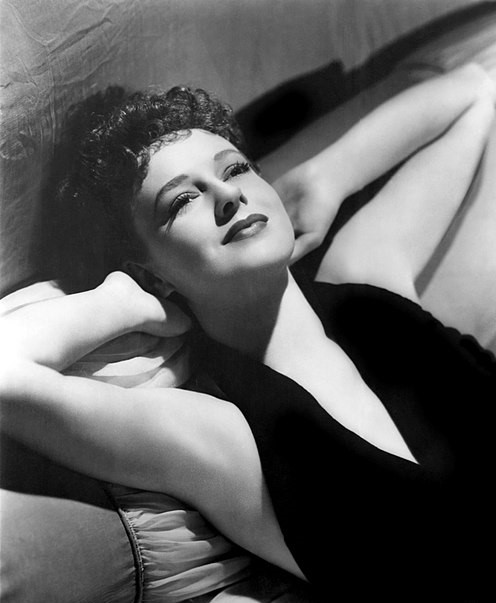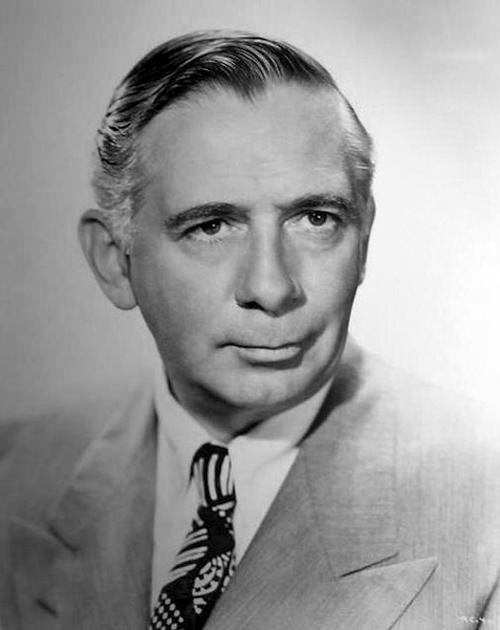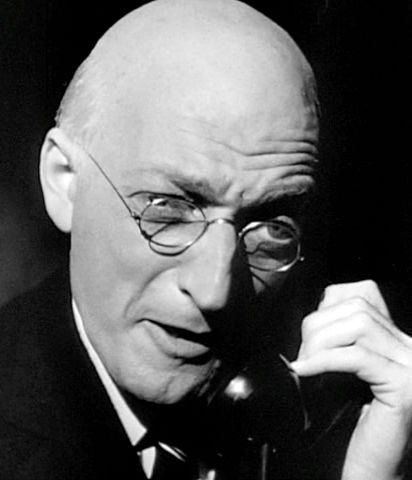Citizen Kane - 1941
back| Released by | RKO Radio Pictures |
| Director | Orson Welles |
| Producer | Orson Welles |
| Script | Orson Welles and Herman J. Mankiewicz |
| Cinematography | Gregg Toland |
| Music by | Bernard Herrmann |
| Running time | 119 minutes |
| Film budget | $ 840.000,- |
| Box office sales | $ 1,2 million |
| Main cast | Orson Welles - Joseph Cotten - Dorothy Comingore - Agnes Moorehead - Ray Collins |
Citizen Kane
Groundbreaking Movie on Power and Truth
"Citizen Kane" is especially renowned for its innovative cinematography, music, and narrative structure. Although it was Orson Welles' first feature film, his work both in front of and behind the camera garnered immense critical acclaim.
The film's exploration of the life and legacy of the fictional Charles Foster Kane (loosely based on the real-life figures William Randolph Hearst and others) was groundbreaking for its time and continues to influence filmmakers today.
Related
Citizen Kane – 1941
"Citizen Kane," directed by Orson Welles, is a film that revolutionized the art of cinema with its innovative storytelling, cinematography, and narrative structure. Here's a detailed summary and analysis:
Summary and Narrative:
Opening
The film opens with a newsreel detailing the life of the recently deceased Charles Foster Kane, a wealthy newspaper magnate and public figure. His last word, "Rosebud," becomes a tantalizing mystery. A journalist, Jerry Thompson, is tasked with uncovering the meaning behind it.
Flashbacks
Thompson interviews people who were close to Kane. Through these interviews, the film unravels Kane's life in a series of flashbacks.
- Childhood: Kane's childhood is marked by a sudden shift in fortune when a gold mine is discovered on his family's property. He's sent away from his home to live with a banker, Mr. Thatcher, which shapes his perspective on love and loss.
- Rise to Power: Kane takes over the New York Inquirer and becomes a powerful newspaper publisher. He marries Emily Norton, the niece of the President of the United States, but their marriage gradually deteriorates.
- Political Ambitions: Kane's political ambitions lead him to run for Governor of New York. His campaign collapses when his affair with singer Susan Alexander is exposed.
- Later Years: After divorcing Emily, Kane marries Susan. However, their relationship is strained, and Susan eventually leaves him. Kane's life becomes more isolated and tragic as he grows old in his vast but empty mansion, Xanadu.
Conclusion
In the end, the mystery of "Rosebud" remains unsolved for Thompson. The audience, however, learns that "Rosebud" was the name of the sled Kane played with as a child—a symbol of innocence and happiness lost when he was taken from his home.
Analysis of the Movie:
Narrative Structure
"Citizen Kane" is notable for its non-linear narrative. The story is told through flashbacks, reflecting the perspectives of various characters. This fragmented structure invites the audience to piece together Kane's life, much like a puzzle, emphasizing the subjective nature of memory and truth.
Cinematic Innovations
Orson Welles and cinematographer Gregg Toland employed deep focus photography, allowing all elements of the scene, both near and far, to be in sharp focus simultaneously. This technique, combined with innovative lighting and framing, added depth to the storytelling.
Themes
The film explores themes of power, corruption, isolation, and the elusiveness of truth. Kane's life journey from an idealistic young man to a powerful yet ultimately lonely individual serves as a commentary on the corrupting influence of wealth and power. The pursuit of "Rosebud" symbolizes the elusive nature of understanding a person's life fully.
Legacy
"Citizen Kane" was ahead of its time, both technically and narratively. It challenged the traditional storytelling of Hollywood cinema and influenced generations of filmmakers. The film's critical analysis of a public figure was controversial, leading to backlash from powerful interests, most notably newspaper magnate William Randolph Hearst.
In summary, "Citizen Kane" is a landmark in the history of cinema. Its groundbreaking narrative structure, deep focus cinematography, and complex character study contribute to its enduring status as one of the greatest films ever made. The film's exploration of the human experience, seen through the rise and fall of Charles Foster Kane, remains as relevant and compelling today as it was in 1941.
Official Trailer of Citizen Kane:
Full Cast of Citizen Kane:
- Orson Welles as Charles Foster Kane
- Joseph Cotten as Jedediah Leland, Kane's best friend and a reporter
- Dorothy Comingore as Susan Alexander Kane, Kane's second wife
- Agnes Moorehead as Mary Kane, Kane's mother
- Ruth Warrick as Emily Monroe Norton Kane, Kane's first wife
- Ray Collins as Jim W. Gettys, a political boss
- Everett Sloane as Mr. Bernstein, Kane's loyal friend and employee
- William Alland as Jerry Thompson, the newsreel reporter
- Paul Stewart as Raymond, Kane's butler
- George Coulouris as Walter Parks Thatcher, a banker who becomes Kane's legal guardian
- Erskine Sanford as Herbert Carter, editor of the Inquirer
- Gus Schilling as the Headwaiter at El Rancho nightclub
- Philip Van Zandt as Mr. Rawlston, Newsreel Producer
- Georgia Backus as Bertha Anderson, Kane's personal secretary
- Harry Shannon as Jim Kane, Kane's father
- Sonny Bupp as Charles Foster Kane III, Kane's son
- Buddy Swan as young Charles Foster Kane
- Fortunio Bonanova as Signor Matiste, Susan's singing coach
Groundbreaking Direction of Orson Welles:
Orson Welles' direction in "Citizen Kane" is widely regarded as groundbreaking and innovative, showcasing his exceptional talent and ingenuity. His approach to filmmaking in this movie can be analyzed across several key aspects:
Visual Storytelling
Welles' use of cinematography in "Citizen Kane" was revolutionary. He worked closely with cinematographer Gregg Toland to employ deep focus photography, a technique that keeps all elements in the frame, from foreground to background, in sharp focus. This allowed Welles to create multi-layered scenes where the action and reaction could be captured simultaneously, adding depth and complexity to the narrative.
Composition and Framing
Welles' compositional skills are evident in the way he framed his scenes. He often used low-angle shots to depict the towering presence and authority of Kane. The mise-en-scène in each frame was meticulously designed to enhance the storytelling, with every element, from the positioning of the actors to the set design, contributing to the narrative.
Non-Linear Storytelling
Welles broke away from the linear narrative structure typical of Hollywood films at the time. "Citizen Kane" is told through a series of flashbacks, each from the perspective of different characters who knew Kane. This fragmented narrative structure invites the audience to piece together the puzzle of Kane's life, emphasizing the subjective nature of memory and truth.
Innovative Use of Sound
Welles, coming from a radio background, understood the power of sound. He used layered sound designs and varying auditory perspectives to create a sense of realism and depth. The film's soundtrack and dialogue overlap in ways that were innovative for the time, contributing to the dynamic storytelling.
Thematic Depth
Welles tackled themes of power, corruption, loss, and the elusive nature of truth. He presented Charles Foster Kane as a complex character whose life was a tapestry of contradictions. The film's exploration of Kane's rise and fall serves as a broader commentary on the human condition and the corrupting influence of wealth and power.
Risk-Taking and Innovation
Welles was only 25 years old when he co-wrote, directed, and starred in "Citizen Kane," and his youthful ambition and willingness to take risks are evident in the film. He challenged Hollywood norms and pushed the boundaries of what was technically and narratively possible in cinema.
Influence on Cinema
The influence of Welles' direction in "Citizen Kane" extends far beyond its release in 1941. It changed how stories could be told in film, influencing generations of filmmakers. The techniques he employed in narrative construction, visual composition, and sound design continue to be studied and admired in the film industry.
The Meaning of the Rosebud Symbol:
The term "Rosebud" in "Citizen Kane" is one of the most famous symbols in film history, embodying multiple layers of meaning and serving as the central mystery of the narrative. Its significance can be interpreted in several ways:
- Lost Innocence and Childhood: The most direct interpretation of "Rosebud" is revealed at the end of the film: it's the name of the sled that Charles Foster Kane played with as a child. This sled represents Kane's lost childhood and the innocence and happiness he experienced before he was taken from his home and thrust into a life of wealth and expectation. In this sense, "Rosebud" symbolizes the purest time in Kane's life, before the corrupting influences of power and wealth.
- The Elusiveness of Happiness: Throughout his life, Kane accumulates wealth and power, yet he remains deeply unfulfilled. "Rosebud" symbolizes the simple joy that Kane cannot reclaim. It's a poignant reminder that happiness and contentment often lie in the simplest of things, which wealth and power cannot buy.
- A Commentary on Materialism: Kane's dying word suggests that for all his material success, the most meaningful thing to him is a memory from his childhood, encapsulated in a simple sled. This can be seen as a critique of materialism and the pursuit of wealth at the expense of personal relationships and emotional fulfillment.
- The Complexity of Human Experience: The film's quest to understand the meaning of "Rosebud" underscores the idea that a single word or object cannot encapsulate a person's life. It highlights the complexity and multifaceted nature of human experience.
- Narrative Device: From a storytelling perspective, "Rosebud" serves as a narrative device that drives the plot and frames the film's structure. The mystery of "Rosebud" propels the journalist's investigation into Kane's life, allowing the audience to explore his character through various flashbacks and perspectives.
In essence, "Rosebud" is a deeply symbolic element that resonates throughout "Citizen Kane," enriching its themes and adding to the film's enduring intrigue and complexity. It is a testament to Orson Welles' and Herman J. Mankiewicz's skill in storytelling that such a simple object could carry such profound meaning and leave such a lasting impact on audiences.
Performance of Joseph Cotten:
Joseph Cotten's performance in "Citizen Kane" as Jedediah Leland stands out as a pivotal element in the film, showcasing his immense talent as an actor. His portrayal can be analyzed in several key aspects:
Characterization
Cotten's portrayal of Leland, the best friend and sometimes critic of Charles Foster Kane, is nuanced and multi-dimensional. Leland is both a participant in and an observer of Kane's life, offering a unique perspective on the protagonist's rise and fall. Cotten brings a sense of depth and complexity to the character, balancing loyalty and disillusionment with subtlety and emotional depth.
Emotional Range
Cotten exhibits a remarkable emotional range in the film. In the scenes depicting the younger Leland, he brings an energy and optimism that contrasts sharply with the more cynical and disenchanted older Leland. This transition in Leland's character, from the youthful idealist to the weary elder, is portrayed with a poignant sense of realism by Cotten.
Chemistry with Welles
The dynamic between Joseph Cotten's Leland and Orson Welles' Kane is a critical component of the film. Cotten provides a counterbalance to Welles' larger-than-life portrayal of Kane. The chemistry between the two actors adds a layer of authenticity to their friendship and later estrangement, highlighting the film's exploration of loyalty, power, and the cost of ambition.
Subtle Expressiveness
Cotten's performance is notable for its subtlety and expressiveness. He conveys complex emotions through small gestures, facial expressions, and vocal inflections. This subtlety is particularly evident in the scenes where Leland reflects on Kane's life and their friendship, revealing his insights into Kane's character and his own feelings of disappointment and loss.
Narrative Role
As a character, Leland serves as a moral compass and a narrative foil to Kane. Through Cotten's performance, Leland emerges as a voice of reason and a critical observer of Kane's actions and motivations. His interviews with the reporter Thompson provide key insights into the story, and Cotten delivers these with a mix of nostalgia and bitterness, adding layers to the film's narrative structure.
Impact on the Film
Cotten's performance contributes significantly to the film's exploration of themes such as the corrupting influence of power, the complexities of human relationships, and the elusive nature of truth. His portrayal of Jedediah Leland adds emotional weight and depth to the film, making him a memorable and essential part of "Citizen Kane."
Notable Lines from the Movie:
"Citizen Kane" is renowned for its compelling dialogue and memorable quotes that have become iconic in the world of cinema. Here are some significant quotes from the film:
"Rosebud."
- The last word uttered by Charles Foster Kane, setting the stage for the film's central mystery.
"It's terrific!"
- Kane's comment after reading a bad review of his wife's opera performance, showcasing his complex character and denial.
"You know, Mr. Bernstein, if I hadn't been very rich, I might have been a really great man."
- Kane's reflection on how wealth influenced his life and potential, hinting at the film's exploration of power and corruption.
"Don't believe everything you hear on the radio."
- A line that not only speaks to the narrative but also wittily references Orson Welles' own history with radio (notably, the "War of the Worlds" broadcast).
"Old age. It's the only disease, Mr. Thompson, that you don't look forward to being cured of."
- A poignant observation on aging and mortality.
"Mr. Kane is finishing the review you started - he's writing a bad notice! I guess that'll show you!"
- Demonstrating Kane's ego and determination to control the narrative.
"I don't think there's one word that can describe a man's life."
- A line that speaks to the film's central theme of the complexity of human life and the elusiveness of understanding a person fully.
"A fellow will remember a lot of things you wouldn't think he'd remember. You take me. One day, back in 1896, I was crossing over to Jersey on the ferry, and as we pulled out, there was another ferry pulling in, and on it there was a girl waiting to get off. A white dress she had on. She was carrying a white parasol. I only saw her for one second. She didn't see me at all, but I'll bet a month hasn't gone by since that I haven't thought of that girl."
- Mr. Bernstein's reminiscence, highlighting the film's exploration of memory and nostalgia.
These quotes are not just memorable lines but are integral to the film's exploration of its themes, such as the complexity of the human character, the influence of wealth and power, and the subjective nature of truth and memory. Each quote contributes to the rich tapestry that is "Citizen Kane."
Awards and Recognition:
Academy Awards (1942)
- Nominated for Best Picture
- Won Best Original Screenplay: Orson Welles and Herman J. Mankiewicz
- Nominated for Best Director: Orson Welles
- Nominated for Best Actor: Orson Welles
- Nominated for Best Art Direction-Interior Decoration, Black-and-White: Perry Ferguson, Van Nest Polglase, A. Roland Fields, Darrell Silvera
- Nominated for Best Cinematography, Black-and-White: Gregg Toland
- Nominated for Best Film Editing: Robert Wise
- Nominated for Best Music, Scoring of a Dramatic Picture: Bernard Herrmann
- Nominated for Best Sound, Recording: John Aalberg (RKO Radio Studio Sound Department)
Other Recognitions
- New York Film Critics Circle Awards (1941): Won Best Picture
- National Board of Review, USA (1941): Listed as Top Ten Films of the year
- AFI's 100 Years... 100 Movies (1998 and 2007): "Citizen Kane" was ranked #1 in both editions as the greatest American movie of all time.
The film's critical success was in stark contrast to its initial commercial performance and the controversy it generated, particularly from William Randolph Hearst, who was widely believed to have inspired the character of Charles Foster Kane. Despite this, "Citizen Kane" has since been re-evaluated and is now celebrated for its artistic and technical achievements, often being cited as one of the greatest films ever made. The movie's influence on the art of cinema, as well as its groundbreaking narrative and visual style, have been recognized and honored in various forms over the years.

